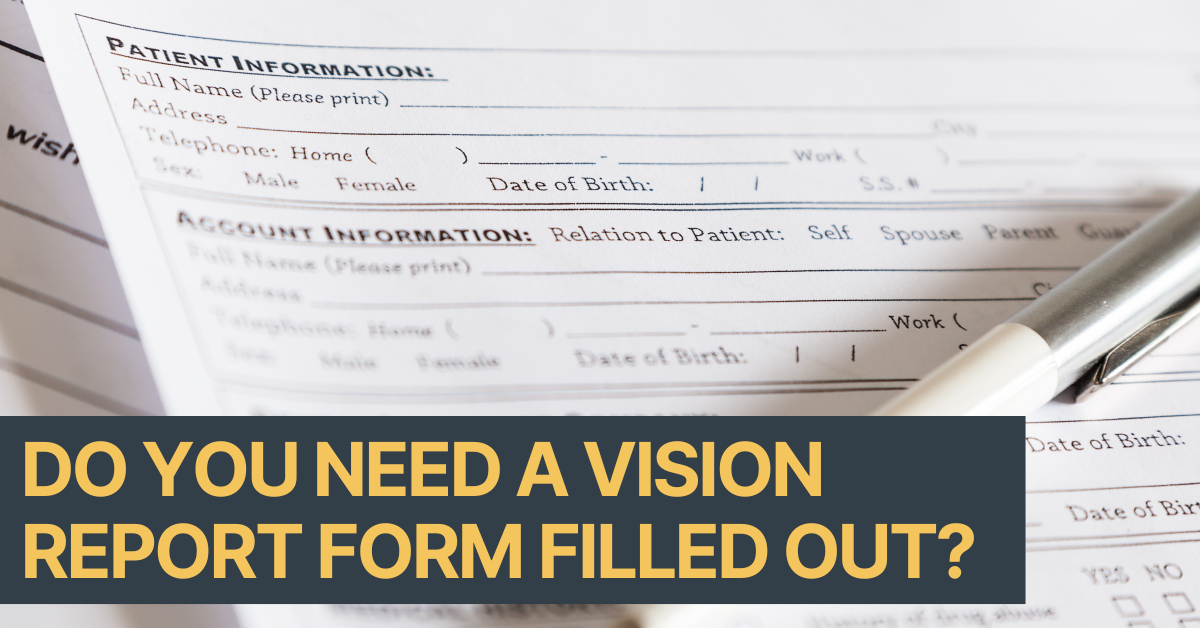Do you need a vision report form?
You may be coming in for your eye examination to update your glasses, contacts or just complete a routine health check. However, many employers and government agencies now require an eye examination as part of a regular screening program.
The goal of this is to ensure applicants and employees have met the specific visual requirements for the tasks associated with various occupations.
From police officers to welding inspectors to renewing your driver’s license, different jobs have specific visual demands.
Helio Optometry is here to help you navigate the unique eye tests needed to complete forms to apply for a job or renew your driver's license.
At Helio Optometry, every eye exam is a comprehensive assessment of your visual system. During your eye exam, we will complete a thorough history and discuss the specific visual needs for work, home and play. We will find a clear and comfortable prescription to get you seeing your best. We will assess the health of the eyes and review your Optomap retinal imaging and any other diagnostic tests performed during the examination. Generally, this is more than enough information to determine if you meet the visual requirements set by your employer.
Occasionally, your employer may require extra testing beyond this and documentation that it was completed. The most common extra tests are:
1. Bailey-Lovie Contrast Sensitivity Testing.
The Bailey-Lovie visual acuity chart is used to determine how well a patient can see under both high and low-contrast conditions. Most situations in the real world are not as high-contrast as black letters on a white screen on the standard eye chart. Driving at night or in the rain are examples of conditions where the visual environment can be described as low-contrast.
Laser vision correction and intraocular lens implants change how light enters the eye. This may affect someone's visual acuity when under less than ideal contrast conditions. The Edmonton Police Officer application vision report requires applicants who have had refractive surgery such as LASIK, PRK and SMILE to have Bailey-Lovie testing performed.
What to expect:
The Bailey-Lovie chart has two sides. One side has high-contrast black letters on a white background. On the other side of the chart, the letters appear more grey, or similar in colour to the background. The test is done under bright and dim lighting conditions and the score is recorded.
Who:
Edmonton Police Officer applicants who have a history of laser vision correction or if required by your employer.
When:
This type of testing is generally only required for the application form but may be required again at the employers discretion.
2. Peripheral Visual Field Testing.
Peripheral vision helps us see objects that are not in our direct line of sight, such as curbs or oncoming vehicles. Peripheral vision can be affected by eye diseases such as drooping eyelids, glaucoma and macular degeneration. Cardiovascular disease such as hypertension, diabetes and stroke can also have the effect of limiting someone's side vision. Because of this, it is common for elderly drivers to re-certify their driver’s license at regular intervals.
The Alberta visual referral report requires binocular visual field testing in addition to measuring visual acuity. In our clinic we use a special instrument called the Humphrey HFA-3 visual field analyzer to assess a patient's peripheral vision.
What to expect:
A visual field test takes around 5 minutes to complete. The test is done with both eyes open at the same time and you are to wear your regular glasses or contact lenses.
Who:
If you are getting your first driver's license or renewing your expired one, the registry may request further vision testing which will include a visual field.
When:
The required medical review frequency depends on the class of driver’s license. Additionally, If there is any medical eye concern that could impact your visual field, your optometrist may order a visual field test during the exam. In this case, the test may be covered by Alberta health care.
3. Color Vision Testing.
Color Blindness or colour vision deficiency is a hereditary condition that affects around 8% of the population, most of which are men. Less than 1% of women have a colour vision deficiency. This does not mean these folks see the world in black and white, but instead they experience something called “colour confusion” and have difficulty differentiating between shades of red and green. Having good colour vision may be essential for pilots, certain military occupations, police and welding inspectors.
What to expect:
The easiest way to screen for colour blindness is with Ishihara plates. This is a set of images made of randomly sized green and red coloured circles. Within the pattern of circles is a hidden number that is visible to those with regular colour vision. If we need to specifically determine if a person is green or red colour deficient, we use a test called the Farnsworth D-15. This test is completed by ordering a set of coloured discs from most blue to most purple.
Who:
Some welding inspector forms, police forms, military forms or if required by your employer.
When:
Employers may request this test to be performed annually or simply just at the time of application.
Next Steps.
Helio Optometry has the equipment to complete all of these tests. If you anticipate you may need help with a vision related form, please just kindly let our staff know and we will be able to assist you. All of these testing procedures can be completed at the time of your regular eye examination.



